Reply To:
Name - Reply Comment
Last Updated : 2024-04-26 02:12:00
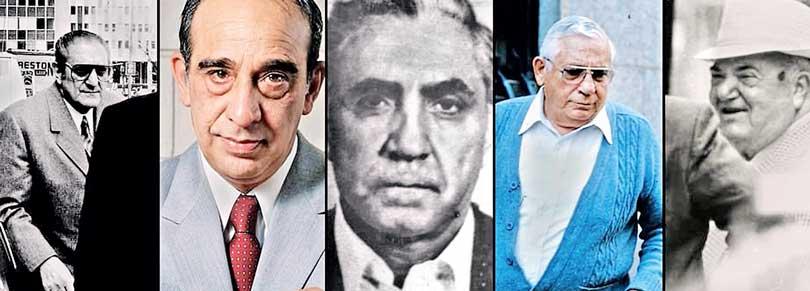
From left to right, the five mob bosses indicted and convicted in the FBI's landmark case against organised crime : Paul Castellano, Carmine Persico, Philip Rastelli, Anthony 'Ducks' Corallo and Fat Tony Salerno. Together these men made up 'The Commission' a governing body of the mob that authorised all crimes on behalf of the Gambino, Colombo, Bonanno, Lucchese and Genovese families
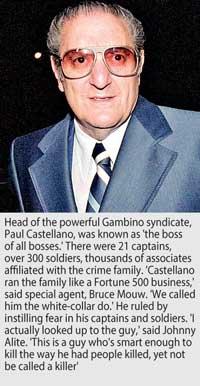 As long as there’s been cinema there’s been movies about the mafia, but now along comes Fear City: New York vs The Mafia, a three part Netflix docuseries that tells the largely unknown story of law enforcement’s war on organised crime. It’s a story about how the goodfellas were taken down by the good guys. It wasn’t easy or glamorous. By the 1980s, the mob controlled every aspect of business in New York City; they ruled by fear, terrorised everyday citizens and ruthlessly killed anyone who stood in their way.
As long as there’s been cinema there’s been movies about the mafia, but now along comes Fear City: New York vs The Mafia, a three part Netflix docuseries that tells the largely unknown story of law enforcement’s war on organised crime. It’s a story about how the goodfellas were taken down by the good guys. It wasn’t easy or glamorous. By the 1980s, the mob controlled every aspect of business in New York City; they ruled by fear, terrorised everyday citizens and ruthlessly killed anyone who stood in their way.
The series reveals what it was like for FBI agents to infiltrate the mafia’s notorious ‘five families’ and reveals the painstaking legal work that went into outwitting the longest running crime show in American history— the Cosa Nostra. Fear City is as much a spy thriller as it is a mob movie, with an emphasis on how law enforcement endeavored the impossible task of taking down the mafia.
The David and Goliath story comes to life through wiretap recordings and the anecdotes of retired FBI agents, former mobsters and the prosecutor who went after them - Rudy Giuliani. ‘Our relationship with the mafia was a cat and mouse game. A very serious game to be sure,’ said Lin DeVecchio, Special Agent FBI.
The series begins with an appearance by Curtis Sliwa, Founder of the Guardian Angels, a volunteer crime stopping organisation that was created in 1979 when New York City was a cauldron of violence. ‘In the ‘70s the City of New York was owned by the mob,’ he says while sitting for a haircut at his barber shop.
A Brooklyn native himself, Sliwa has the institutional memory of what it was like growing up under the thumb of mobsters. ‘You knew when you borrowed money from them, if you didn’t pay on time, they’d bend your leg and stuff it in your pocket.’
Johnny Alite, a former Gambino crime family soldier tells the camera: ‘You wanna motivate 'em, when a guy comes to see me and he insults me with $1,000, yeah I hurt him.’ He adds: ‘After I hurt him, I tell him to go get me the rest of my money. Now there’s no patience, if he doesn’t have the money, I baseball bat him.’ The series takes you back to the late 1970s when New York City was plagued by murder, bank robberies, hijackings, drugs, and prostitution at the hands of organised crime. ‘New York was lawless,’ said DeVecchio. ‘No matter how much manpower we put out there, the mafia ran virtually unfettered.’

Curtis Sliwa, founder of the Guardian Angels told Netflix: 'You know how I would spot the wise guys? Well particularly in the disco era, they had the polyester waffle weave bell bottoms. They had the open neck, you know? They had to have the hair. Then they'd have their toilette water on, you know, like that Old Spice. Man, you light a match you'd all be blown to kingdom come'
In 1931, the New York mob organised into five different families: Gambino, Colombo, Bonanno, Lucchese and Genovese. Their businesses grew overtime from small neighborhood rackets to lucrative black market institutions and by the 1980s - they were deeply entrenched with the city’s essential, everyday functions and businesses; they were practically untouchable.
‘They put their tentacles into legitimate society,’ explained Rudy Giuliani, who was appointed the US Attorney for the Southern District of New York at the time. Something ‘no other organised crime group ever did before’.
The FBI was unaware of how vast the scope of their criminal enterprise was until they began their investigation in the mid 1970s from scratch. Starting from zero meant they had to learn who exactly ‘the mob’ was, how they operated, what they did, and who was in charge. The early days of the investigation were uncoordinated and marred by confusion across three separate FBI offices with no unifying strategy. ‘It was organised crime but a very unorganised investigation,’ said Jim Kossler, a supervisor on the case. ‘I didn’t have any power to do anything. We were lucky if we put away one or two guys in jail every year,’ said Kossler who explained that going after lower-level mafia soldiers was much like a game of Whac-a-Mole - for every one you put away, another one was there to take his job.
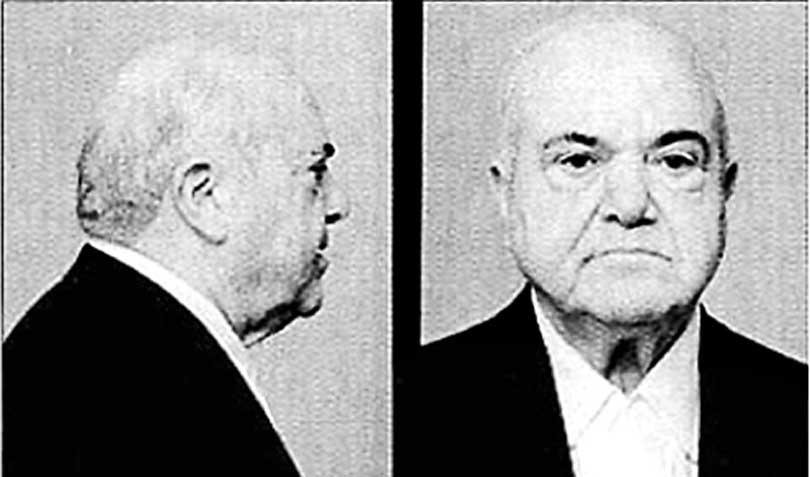
'Fat Tony' Salerno's mugshot in 1986. 'We started looking at Fat Tony in 1983,' said an FBI supervisor.
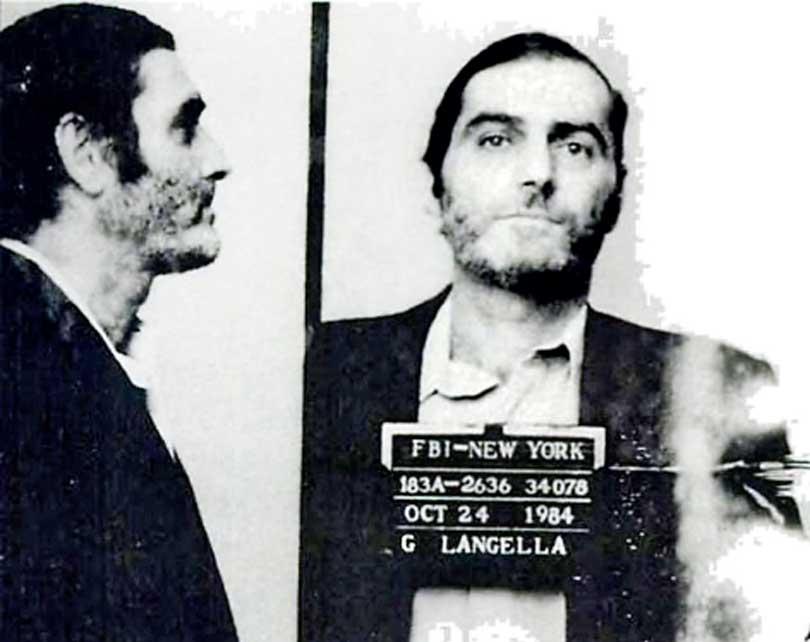
Gennaro Langella was the underboss of the Colombo crime family
Organised crime operated under a strict hierarchy: at the very top were bosses and under bosses. Captains were mid-level members and the lowest men on the totem pole were the soldiers who conducted the day- to- day crimes. The biggest obstacle law enforcement faced in going after the mob was tying the bosses to the crimes committed on their behalf.
A turning point for the FBI came from an unexpected place: a law professor at Cornell University who invited agents to attend a week-long seminar about a little known piece of legislation known as the ‘Racketeer Influenced and Corrupt Organisations Act’ (or RICO for short). ‘I went kicking and screaming, but as it turned out, it would change everything,’ said Kossler, who had an epiphany during the seminar. Using RICO, the FBI would be able to go after the entire family without direct evidence implicating higher-ups.
The series takes you back to the late 1970s when New York City was plagued by murder, bank robberies, hijackings, drugs, and prostitution at the hands of organised crime. ‘New York was lawless,’ said DeVecchio. ‘No matter how much manpower we put out there, the mafia ran virtually unfettered.
The law allowed for a person to be arrested for a crime they ordered somebody else to commit; this paved the way for law enforcement to prosecute an entire mob family at a time, rather than tediously going after the lower-level individuals in it.
Now I knew how we could bring down the entire New York Mafia,’ said Kessler. The FBI changed their strategy to focus on the five family bosses: ‘Fat Tony’ Salerno, Tony ‘Ducks’ Corallo, Gennaro Langella, Carmine ‘Junior’ Persico and most importantly, the head of the Gambino crime family, Paul Castellano, also known as ‹the boss of all bosses.’ ‘Castellano ran the family like a Fortune 500 business,’ said Bruce Mouw who was assigned to supervise the Gambino squad. ‘We called him the white-collar don because he read the Wall Street Journal. He was very successful financially. But the most important thing he understood was, in order to rule a crime family, you have to instill fear in your soldiers and captains.’
As it turns out, finessing a legal strategy under the mechanics of RICO was only half the battle. Building a case with enough evidence to prosecute was a tremendous undertaking that involved systematically tracking hundreds of mob associates through wiretaps and surveillance over the course of five years.
Being that gangsters refused to testify and cooperate with law enforcement as witnesses, the FBI began bugging the mafia in the places they operated most: social clubs, restaurants, cars and houses.’Then when you play the tapes at trial, your best witnesses are the criminals themselves,’ explained Special Agent, Bruce Mouw.
They made men take a strict oath of silence known as ‘omerta.’ ‘It’s the main reason why the mob survived and prospered for well over a hundred years in this country,’ said Michael Franzese, a former captain in the Colombo family.

Michael Franzese, a former captain in the Colombo family told Netflix: 'The early '80s was the golden era of our life, the mob. New York was the seat of power for that life all over America.'
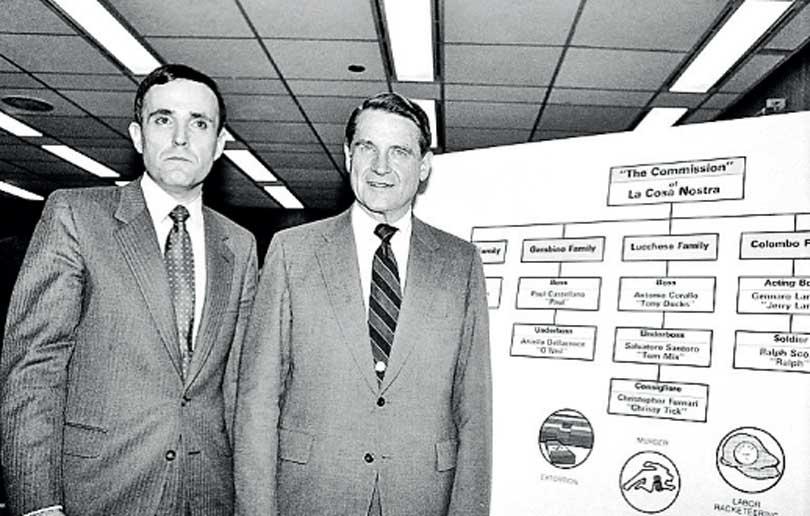
US Attorney Rudy Giuliani (left) and FBI Director William Webster look at chart of 'The Commission' of La Cosa Nostra during a press conference at which reputed godfathers of the nation's five most powerful mafia families were indicted. Law enforcement used an arcane law known as RICO (Racketeer Influenced and Corrupt Organisations Act) to prosecute the entire group as a whole, rather than individuals
Franzese, the son of an underboss recounted to Netflix how he took ‘the blood oath’ on Halloween night in 1975. ‘I held out my hand, he took a knife, cut my finger. He took a picture of a saint, put it on my hands, lit a flame and said, ‘Betray your brothers and you will die and burn in hell like this saint is burning in your hands.’’
Some of the most compelling anecdotes from the Netflix series retrace the cloak and dagger operations that took place in order to collect surveillance of their high-profile targets. Sitting in his car in the shadow of New York City’s, Williamsburg Bridge, Special Agent Joe Cantamessa recounts how he posed as a cable repair man to gain entry into Castellano’s Staten Island mansion.
Hours of gumshoeing gleaned that Castellano enjoyed watching CNN nightly news from his dining room where all of his most important conversations took place. This gave Cantamessa an opportunity to create ‘a problem’ that he needed to fix, ‘My blending technique would depend on the neighborhood and generally speaking I’m just a local guy doing his job.’
He coordinated fake static interference on the ‘broken’ television set with an agent sitting in a van parked outside as he banged on the TV in frustration. ‘It was pre-planned, all orchestrated and bench tested before I went, including my level of uncooperativeness,’ said Cantamessa - who successfully bugged the TV, all with the unwitting help of Castellano who held his flashlight.
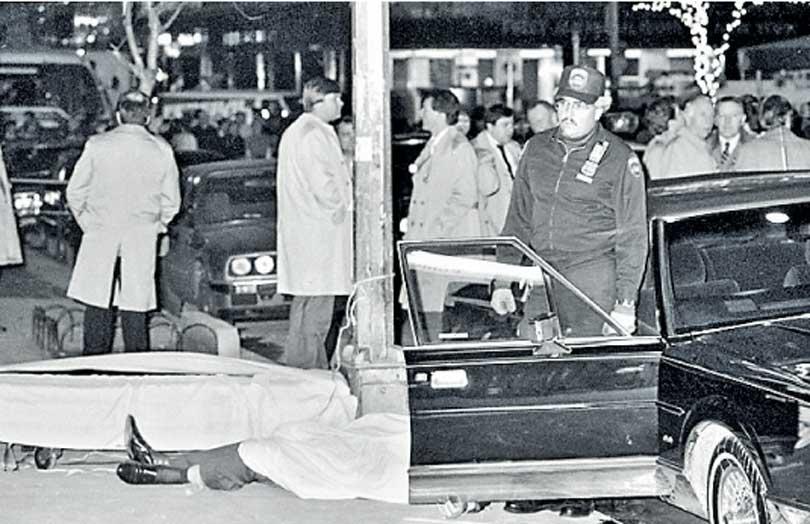
During the 'The Commission' trial, Paul Castellano was executed by John Gotti and two other underlings outside Sparks Steakhouse in Midtown Manhattan. 'Angelo Ruggiero, John Gotti and myself were all moving drugs,' said Franzese. Ruggiero and Gotti knew they had been caught talking about their drug business on wiretaps.
Another nail biting scene retells how Cantamessa broke into the Casa Storta restaurant in Brooklyn to plant a recording device in the overhead lamp of a banquet room where the Colombo family conducted business.
‘In Casa Storta we had some new challenges. Her name was Nina, she was about 150 pounds. She was an Italian bull mastiff,’ said Cantamessa. His partner came prepared with ‘an injectable’ but changed his mind last minute, worried that Nina wouldn’t survive sedative. ‘None of us wants to harm any animal,’ he said. Inevitably, Nina attacked another agent in the entry team and dragged him by the foot until she relented after somebody sprayed her down with a fire extinguisher. The operation was successful.
Planting a bug on Tony ‘Ducks’ Corallo, boss of the Lucchese crime family was an even greater technical challenge. Agents discovered that Corallo negotiated his most important business in his chauffeured Jaguar.
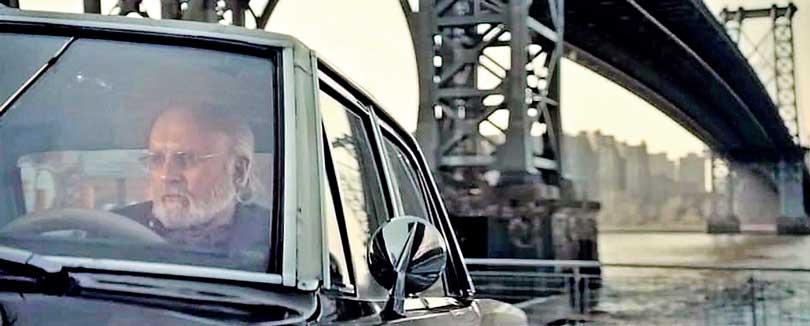
Former FBI special agent, Joe Cantamessa used disguises to gain entry into the homes of well-protected mob bosses to plant wiretaps. In order to bug Paul Castellano's house, Cantamessa purposely interfered with his cable-box connection and posed as a TV repair man. He coordinated fake static interference on the 'broken' TV set.
The Lucchese task force purchased an identical car in order to practice planting the device as quickly and seamlessly as possible. Transmitting the recordings in a pre-iCloud era required three chase cars of different makes and models (to avoid detection) following him at all times. ‘A blue van would have been too suspicious.’
Later, agents had to find a way to remove the device when it accidentally drained the car battery while Corallo was out of town. They stopped the tow truck as it was on its way to the mechanic, but luck would have it that the driver was using a suspended license. It gave an FBI technician just enough time to enter the vehicle and disconnect the bug all within 45 seconds while the police interrogated the driver.
Daily Mail

Add comment
Comments will be edited (grammar, spelling and slang) and authorized at the discretion of Daily Mirror online. The website also has the right not to publish selected comments.
Reply To:
Name - Reply Comment
US authorities are currently reviewing the manifest of every cargo aboard MV
On March 26, a couple arriving from Thailand was arrested with 88 live animal
According to villagers from Naula-Moragolla out of 105 families 80 can afford
Is the situation in Sri Lanka so grim that locals harbour hope that they coul